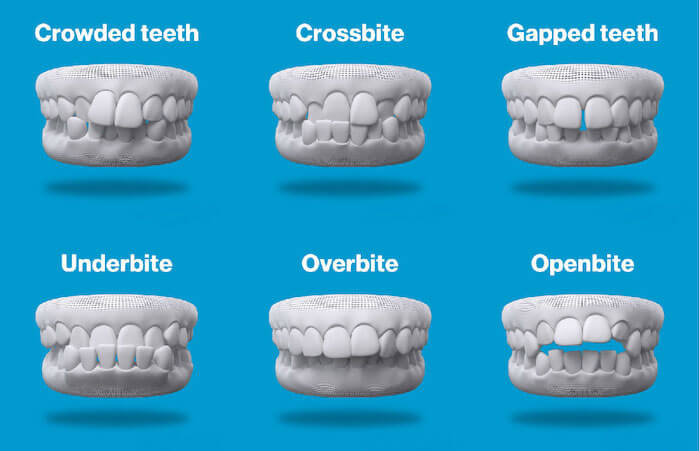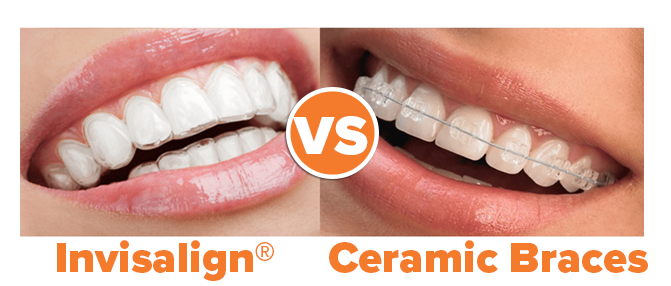The Ultimate Contrast: Invisalign vs. Traditional Braces for Grownups
The Ultimate Contrast: Invisalign vs. Traditional Braces for Grownups
Blog Article
Invisalign vs. Standard Braces: Which Option Is Right for You?
When considering orthodontic treatment, the choice in between Invisalign and typical dental braces provides a number of crucial elements that warrant mindful evaluation. Invisalign supplies a discreet alternative with detachable aligners, while standard dental braces offer a much more visible yet effective option for extreme imbalance.
Introduction of Treatment Choices

On the other hand, conventional dental braces contain steel braces and cords that are bonded to the teeth. This approach uses continual pressure in time to achieve alignment. While effective for complicated orthodontic issues, conventional dental braces call for regular sees for adjustments and can present obstacles in preserving dental health because of the trouble of cleaning around braces and wires.
Both options have their qualities, and the selection commonly depends upon particular oral conditions, way of living preferences, and individual conformity. Eventually, consulting an orthodontic expert is crucial for determining the most ideal treatment plan customized to private requirements. Recognizing the subtleties of each alternative can significantly influence the general success of orthodontic therapy.
Visual Factors To Consider
A significant variable influencing the selection in between Invisalign and conventional braces is the aesthetic appeal each therapy supplies. Invisalign aligners are crafted from clear plastic, making them practically undetectable when put on.
On the other hand, typical braces contain steel braces and wires, which can be much more noticeable. While advancements in orthodontic modern technology have led to the growth of smaller sized braces and colored elastics, traditional dental braces still preserve an even more noticeable profile. For some people, the presence of braces might prevent them from looking for required therapy.
Inevitably, the selection between Invisalign and typical braces might hinge on personal choices regarding appearances. Clients that prioritize discernment often lean towards Invisalign, while those that are less concerned regarding visibility may go with standard braces. Recognizing the visual ramifications of each choice is vital for making an educated choice that aligns with one's way of life and choices.
Comfort and Convenience

In terms of ease, Invisalign aligners are detachable, enabling individuals to appreciate their favorite foods without constraint and preserve ideal oral health. Brushing and flossing are simplified, as the aligners can be taken out throughout these routines, whereas traditional braces require careful steering around cables and braces.
In contrast, typical dental braces require routine adjustments, making them much less convenient for those with busy timetables. Overall, the comfort and comfort of Invisalign make it an enticing choice for lots of individuals looking for orthodontic treatment.
Treatment Duration and Efficiency
While both Invisalign and standard dental braces work in dealing with dental imbalances, the period of therapy can vary substantially in between both options. Commonly, Invisalign therapy can take anywhere from 12 to 18 months, depending on the intricacy of the case. The clear aligners work by progressively changing teeth right into their desired positions, and normal follow-ups with an orthodontist assistance ensure progression address remains on track.
On the other hand, traditional dental braces typically call for a longer commitment, usually varying from 18 months to three years. This is because of their set nature and using braces and cords, which can be much more effective for severe imbalances and complicated cases (Invisalign). The therapy effectiveness of conventional dental braces is well-documented, as they enable precise adjustments and greater control over tooth motion
Ultimately, the option between Invisalign and conventional dental braces may rest on both the expected therapy period and the details dental issues handy. Consulting with an orthodontist is essential, as they can give tailored suggestions based on private demands, making certain the selected approach straightens with wanted timeframes and outcomes.
Expense Comparison and Insurance Coverage Choices
Cost plays a considerable role in the decision-making procedure for individuals considering orthodontic therapy, whether going with Invisalign or conventional braces. Typically, the cost of Invisalign varieties from $3,000 to $8,000, while conventional dental braces usually cost between $2,000 and $6,000. Variables influencing these costs include the intricacy of the situation, the duration of treatment, and geographical area.
Insurance policy insurance coverage can substantially impact out-of-pocket costs. Several dental insurance policy plans provide partial insurance coverage for orthodontic therapies, however the specifics can differ widely. It is crucial for clients to evaluate their insurance coverage to figure out the extent of protection for either alternative. Usually, typical dental braces may over at this website be more regularly covered by insurance policy strategies compared to Invisalign, which some insurance companies categorize as an aesthetic procedure.
Additionally, a number of orthodontic techniques offer flexible layaway plan, making both treatment choices more easily accessible. People need to ask about possible funding alternatives and price cuts for ahead of time settlements. Assessing the overall expense, consisting of insurance coverage advantages and repayment strategies, is crucial for making an educated choice that straightens with both visual preferences and budget plan considerations.

Verdict
In recap, the option in between Invisalign and standard dental braces hinges on several elements, including aesthetic choices, convenience, therapy duration, and price. Invisalign supplies a very discreet, removable option that helps with oral hygiene and nutritional adaptability, while traditional dental braces might be a lot more appropriate for complicated dental concerns and usually come with a reduced price factor. Ultimately, assessment with an orthodontist is vital to assess individual scenarios and establish one of the most ideal therapy Visit Website option for attaining optimal oral alignment.
When taking into consideration orthodontic therapy, the selection in between Invisalign and standard braces presents several essential elements that warrant mindful evaluation.Comparing Invisalign and typical braces discloses unique treatment options for orthodontic adjustment.While both Invisalign and typical dental braces are reliable in remedying dental imbalances, the period of treatment can differ considerably in between the 2 choices.Expense plays a significant role in the decision-making procedure for individuals taking into consideration orthodontic therapy, whether choosing for Invisalign or conventional dental braces.In recap, the option between Invisalign and conventional dental braces pivots on several elements, consisting of aesthetic preferences, convenience, therapy duration, and cost.
Report this page